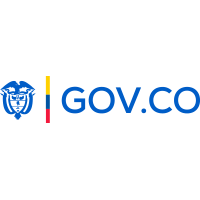Participación en Eventos de Investigación
Vigencia 2019
V Encuentro Regional de Semilleros de Investigación- REDCOLSI-2019-Pamplona (11 Proyectos: 4 Meritorios/ 2 Cupo al Nacional- 15 Evaluadores) |
II congreso nacional de evaluación, calidad y acreditación en educación superior: retos de la educación rural en Colombia- Pamplona (3 ponencias). |
Convocatoria Para Misión Académica Brasil del 12 al 20 octubre de 2019 (3 Proyectos). |
| XII Convención Internacional Sobre Medio Ambiente Y Desarrollo. “Por La Integración Y Cooperación Para La Sostenibilidad”. 1 y el 5 de julio del 2019 en el Palacio de Convenciones de La Habana – Cuba 2019 (1 Ponencia). |
| XII Iberoamerican Congress of Food Engineering CIBIA 2019 that was held from July 1 to 4 at Universidade do Algarve, 2019- Portugal. (2 Ponencias). |
| Encuentro-Taller “Herramientas para la gestión de la información científica colombiana”. 2019-Bucaramanga (1 asistente). |
| VI Simposio Internacional Agroalimentario- 2019-Montería-Cordoba (2 ponencias). |
Convocatoria Social SKIN-Seguros Bolívar – 2019 – Bogotá (1 ponencia). |
| XXII encuentro nacional y XVI encuentro internacional de semilleros de investigación – fundación REDCOLSI – 2019-Valledupar (2 ponencias- 1 evaluador). |
| VI Feria de la Ciencia y I Seminario de Investigación 2019 – Cucuta (1 ponencia). |
| XV encuentro nacional y VIII internacional de investigadores de las ciencias pecuarios-2019 – Medellín ( 3 ponencias). |
| Primer Simposio del Oriente por la Investigación e Innovación Educativa Rural, 2019 – El Cerrito, Santander.(1 ponencia). |
| VI semana internacional de ciencia, tecnología e innovación – SIES+ 2019 – Cúcuta – (4 ponencias) |
Vigencia 2018
IV Encuentro Regional de Semilleros de Investigación- REDCOLSI-2018- Cúcuta (12 Proyectos: 3 Meritorios / 3 Cupos al Nacional – 14 Evaluadores) |
| 1er Encuentro Internacional De Semilleros De Investigación En Ingeniería De Alimentos Y Afines (ENSIAL)- Cúcuta (1 ponencia) |
I congreso nacional de evaluación, calidad y acreditación en educación superior: retos de la educación rural en Colombia- Pamplona (2 ponencias) |
XXI Encuentro Nacional Y XV Encuentro Internacional De Semilleros De Investigación – Fundación REDCOLSI- 2018 – Pasto (3 Proyectos) |
| XIV Congreso internacional de ciencia y tecnología de alimentos – CONACTA 2018- Bogota (2 ponencias) |
19th IUFoST World Food Science and Technology Congress – India (2 ponencias) |
| Primer congreso nacional de emprendimiento, investigación e innovación- Cúcuta (17 asistentes) |
Avances y Retos de las Alianzas Rurales de Educación Desarrollo (ARED) – Bogotá. |
Vigencia 2017
III Encuentro Regional de Semilleros de Investigación- REDCOLSI-2017-Ocaña (16 Proyectos: 6 Meritorios/ 2 Cupo al Nacional- 3 Evaluadores) |
1er Encuentro Empresarial Sector Rural Ambiental y Minero, con los Semilleros de Investigación de la Zona Fronteriza Nororiental- Cúcuta (2 ponencias). |
Séptima Conferencia Internacional sobre Estudios Alimentarios y la Red de Investigación sobre Estudios Alimentarios-Roma-Italia (26-27 Octubre 2017). |
| Congreso Mundial de Medicina Alternativas – CAM-2017- Cartagena (1 ponente) |
Foro innovaciones del sector agrario: Un paso hacia la competitividad-UNAD-2017-Pamplona (1ponencia). |
| VI Muestra Agroindustrial y I Simposio de la Agroindustria Regional –Cúcuta (1ponencia) |
Taller sobre Internacionalización de la investigación en la UFPS-Cúcuta. |
| Conformación de mesas de trabajo de investigación de SIES+- Cúcuta |
Lanzamiento de la Plataforma SUNN MEET UP de proyectos de innovación COLCIENCIAS-Cúcuta. |
Participación en el X Encuentro Nacional y IV Internacional de Semilleros de Investigación-Barranquilla (2 Proyectos). |
I Encuentro Interinstitucional Semilleros De Investigación – Alianza SIES +Cúcuta (10 Proyectos: 1er Puesto del encuentro- 1 Evaluador) |
| Congreso Iberoamericano en Ciencias Agroalimentarias y IV Seminario Internacional de Investigaciones Agroindustriales. Guadalajara de Buga. (1 ponencia). |
Vigencias 2014 a 2016
| Quinto Encuentro Departamental De Semilleros De Investigación (Cúcuta-Norte de Santander) |
IV y V Encuentro De Semilleros De Investigación (ENSI) (Ocaña-Norte de Santander)
|
| Primer Encuentro Departamental De Semilleros De Investigación. (REDCOLSI) (Cúcuta-Norte de Santander) |
| XVIII Encuentro nacional y XII internacional de semilleros de investigación RED COLSI- Nodo Valle Del Cauca-Cali. |
I Congreso Internacional De Conservación Para La Industria Agroalimentaria- Pasto Nariño
|
| II Semana Internacional Y X Semana De Ciencia, Tecnología E Innovación-UFPS |
Organizador Segundo Encuentro Departamental de Semilleros de Investigación-2016. (REDCOLSI)
|
| Séptimo Simposio Internacional de Innovación y Desarrollo de Alimentos, INNOVA 2015 y Décimo Congreso Iberoamericano de Ingeniería de alimentos, CIBIA Montevideo, Uruguay |
| III Congreso Internacional Agroalimentario CIAA. Universidad de Pamplona |
Congreso Internacional en Innovación y Apropiación de las Tecnologías de la Información y las Comunicaciones – CIINATIC 2016.
|


